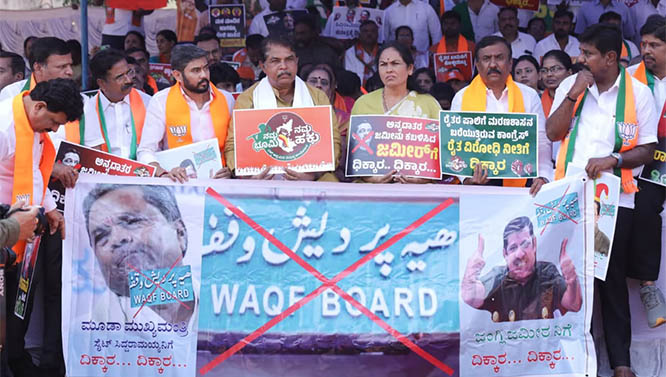Mangaluru, Oct 19: For over a decade, this bunch of Mysuru natives residing in Mangaluru has captured the attention of the coastal region with their unique tradition of Golu or 'Bombe Habba' during Dasara. Once a distinct feature of the traditional Mysuru households during Dasara, is now captivating the attention of Mangalureans.
Over 130 enthusiastic Mysurean families in the region have managed to put-up a show of over 1000 dolls this year under the banner of ‘Nammavaru - Mangaluruvasi Hale Mysuru Vipra Koota’ (N-MHMVK). The association that began in 1996 to bring together Mysuru residents in the coastal district today is also the flag-bearer of the tradition in Mangaluru.
“Unlike in Mysuru, where people are largely familiar with the tradition of Golu and the display of the thematically arranged figurines, here many are unfamiliar, but they patiently wait for us to narrate the history and the story behind it. This is a great encouragement for us to carry-forward our culture but also makes us feel that our effort is worthwhile," says M S Gururaj, Convener of N-MHMVK.
Arranged in nine-steps, each figurine speaks of tremendous amount of depth, knowledge and creativity put into it. "Besides, one has to have substantial knowledge of mythologies like Ramayana and Mahabharata, to retell the legacy of this traditional culture," Gururaj adds.
While the culture of celebrating Dasara by the Vijayanagara dynasty has been recorded as early as 15th century, and later revived by the Wodeyars of Mysore who observed Mahanavami. The then locals at Mysuru who had no access to the palace festivities, started to imitate the festivity at their homes using statues of Gods, and also placed two dolls 'Pattada Gombe' that represented the king and queen and the rituals were performed accordingly.
'Pattada Gombe', in fact even today is gifted to the bride and groom at marriage wishing them prosperity and fertility. "Some of the families who have continued the tradition unbroken have in the possession 'Pattada Gombe' that is over 300-years old" Gururaj exclaims.
While the Gods are placed in the top three rows of the nine tiers, in the subsequent steps figurines of priests, saints and common folks; their lives style, wedding and every day’s scenes are shown. "Back then it was an occasion for the families, neighbobours to visit each others house in the pretext of viewing the replicas and socializing. In this digital era, we are only attempting to promote among the youngsters to carry out such simple acts of social interaction that can bond our society," Gururaj says.
Quite number of times the N-MHMVK members are stuck with the awkward situation where the visitors express desire to purchase the figurines. Like many Mangalureans, Vijay Bolar, a localite said that while being amazed by the collection, he was stumped by the fact that the skillfully made handicrafts was not for sale. "Generally, there is a tendency to think that everything so beautifully decked is up for grabs, or so I thought. Although, I am a bit disappointed that I cannot have one of those figurines, but nevertheless it is beautiful and so is the tradition," he says.
While earlier the collection at the expo came from the personal collection of the association members, some of which is passed down from generations. "But to accommodate the number of audience and increase our display we have also purchased dolls and spread our collection. Indirectly we are also supporting the artisans of wooden and clay art, continue their skills," N-MHMVK says.









Comments
Add new comment